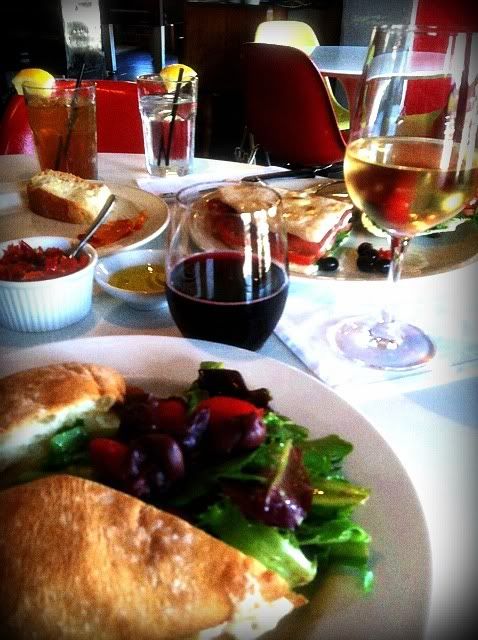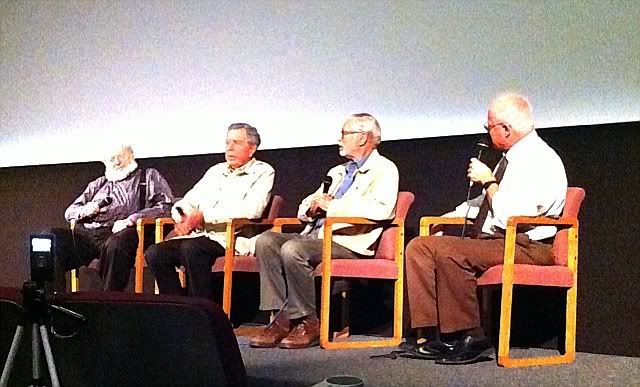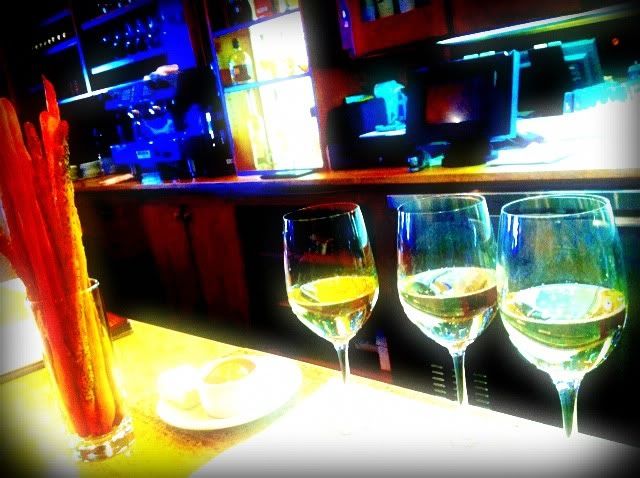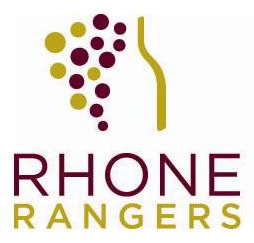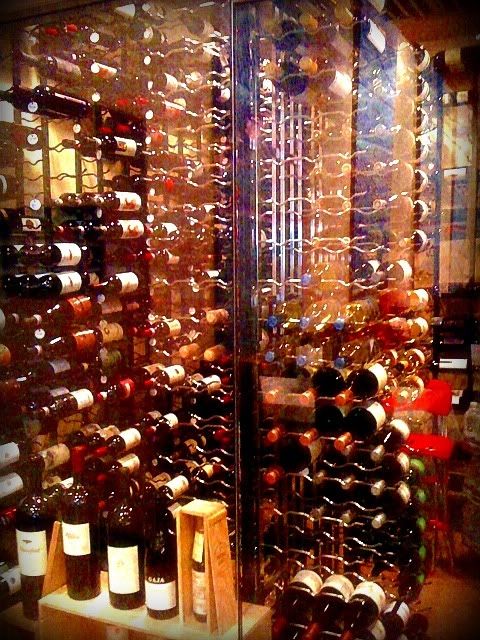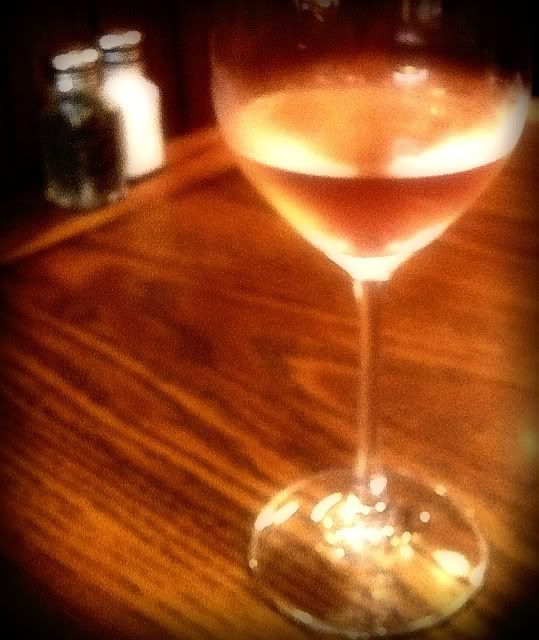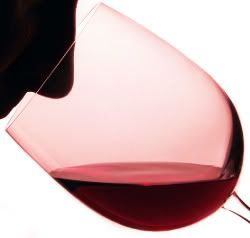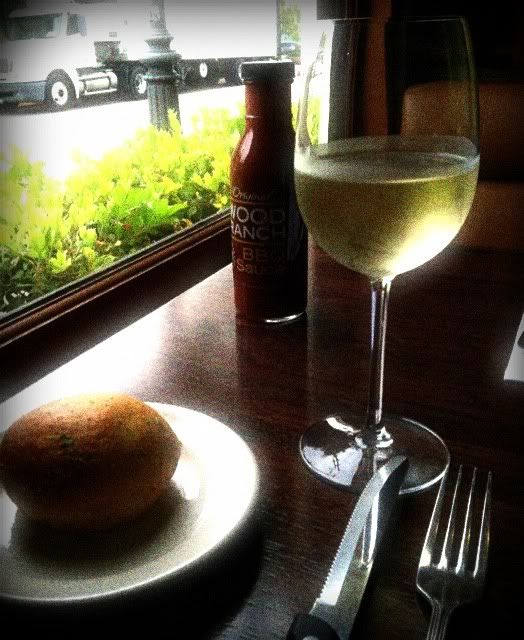A hundred-degree afternoon was probably not the right time to open the doors of Pasadena's a|k|a Bistro and let the outdoors mingle with the indoors, but that is how this Santa Barbara County wine tasting event was constructed.
Some winery tables were outside and some were in, so a flow-through was created to facilitate the tasters making the circuit. The inside portion was almost as uncomfortable as the outside.
The saving grace for those outdoors was the slight breeze, which did not appear inside the bistro. "Outdoor" wineries which were blessed with shade - like Riverbench and Sanford - actually fared pretty well. Those in the afternoon sun - like Tercero and Zaca Mesa - had to sweat it out.
Tercero's Larry Schaffer didn't let the heat wilt his quips. When a taster asked how much he made - referring to the quantity of wine produced - Schaffer shot back, "Not enough! We're a nonprofit winery!" Of course, he was joking, which was no mean feat in the sweltering heat. You have to admire a man who keeps his sense of humor in adverse conditions!
The big, bold aromas and flavors which typify Santa Barbara County wines were solid, as usual. Wine from all four of the AVAs in Santa Barbara County were represented, the Santa Maria Valley, the Santa Ynez Valley, Sta. Rita Hills and Happy Canyon.
As I expected, there was a lot to like at this event. Here are some of the wines I especially liked, listed alphabetically.
Arthur Earl
Arthur Earl is a boutique winery in Los Olivos, California founded by two guys named Art and Earl. I don't know which one was working the table at this event, but he explained, "If you look up 'boutique winery' in the dictionary, there's a picture of us."
Great wines here, Rhone, Italian and Spanish varieties. The Viognier showed flowers and a savory note on the nose, with more savory meeting tropical flavors and a great acidity. The Nebbiolo has a great nose full of roses and meat. A sour blackberry flavor is perfect with the meaty minerality. The Lagrein has cherry and coffee grounds on the nose with a dark and earthy palate. An earthy, black cherry Tempranillo rounded out what was my favorite stop of the day.
Babcock Winery & Vineyards
Bryan Babcock brought his wine in from the western reaches of the Santa Ynez Valley. His Identity Crisis Syrah is a red wine made like a white wine. Skin contact is minimal and it comes out pink! It's a full flavor Syrah though, with a very nice acidity. Top Cream Chardonnay is made with 50% new oak, but it's a light touch with the wood. Psi Clone Pinot Noir mixes bright cherry and blackberry flavors.
Bedford Winery
Stephan Bedford thinks he was born in the wrong country, but he's in wine country now - the Los Alamos hills - and that suits him to a T. His wines show a dark earthiness, even the Riesling and the Chardonnay. It's more expected - but just as appreciated - in the Syrah and Cabernet Sauvignon, both of which have some toothy tannins.
Dragonette Cellars
I was impressed with this outfit's Fiddlestix Vineyard Pinot Noir, great acidity and a touch of a floral component balancing the earthiness. Their Grenache is made with Los Alamos fruit - Syrah and Mourvedre are in the mix - and it boasts bright cherry flavor touched by minerality.
Jaffurs Wine CellarsAn urban winery located in Santa Barbara, Jaffurs specializes in Rhone grape varieties. Upon harvesting the Grenache Blanc grapes, botrytis was found on some of the grapes. Those nobly afflicted were plucked separately and a single barrel of dessert wine was made. Unfortunately, that was not on display. The Grenache Blanc, though, was suitably tart and tangy with quite a finish. Their Grenache shows a tangible layer of darkness over the cherry flavor.
Mosby Winery & VineyardBill Mosby's place is one of the stops I always seem to make when I visit anywhere near Buellton. His Cal-Italia wines are favorites of mine - and my wife digs 'em, too. Bill's Sagrantino offers a bright cherry experience, while his Lagrein throws a dark earthiness over a bunch of violets. There aren't too many California tastings where you can sample one Lagrein, let alone two.
Riverbench
Riverbench produces only Chardonnay and Pinot Noir from their location in the Santa Maria Valley. Nice acidity and tropical flavors make their steel Chardonnay refreshing, and their 30% new French oak effort shows just the right touch of oak. The Mesa Pinot Noir is simply killer, with a good chunk of that Santa Maria Valley earth on the nose and palate. It has a beautiful floral component on the nose as well.
Tercero Wines
Larry Schaffer was pouring from his signature, hand-labeled flasks at what had to be the hottest table on the patio, in more ways than one. His Mourvedre from Camp 4 Vineyard in the eastern end of the Santa Ynez Valley has a huge nose and a brilliant sour cherry flavor. Considering the heat, it was lucky he brought some of his wonderful '09 Rose to refresh. 60% Grenache and 40% Mourvedre, this pink is nice and dry with a "strawberry meets the ground it was grown in" flavor.
Follow Randy Fuller on Twitter
Some winery tables were outside and some were in, so a flow-through was created to facilitate the tasters making the circuit. The inside portion was almost as uncomfortable as the outside.
The saving grace for those outdoors was the slight breeze, which did not appear inside the bistro. "Outdoor" wineries which were blessed with shade - like Riverbench and Sanford - actually fared pretty well. Those in the afternoon sun - like Tercero and Zaca Mesa - had to sweat it out.
Tercero's Larry Schaffer didn't let the heat wilt his quips. When a taster asked how much he made - referring to the quantity of wine produced - Schaffer shot back, "Not enough! We're a nonprofit winery!" Of course, he was joking, which was no mean feat in the sweltering heat. You have to admire a man who keeps his sense of humor in adverse conditions!
The big, bold aromas and flavors which typify Santa Barbara County wines were solid, as usual. Wine from all four of the AVAs in Santa Barbara County were represented, the Santa Maria Valley, the Santa Ynez Valley, Sta. Rita Hills and Happy Canyon.
As I expected, there was a lot to like at this event. Here are some of the wines I especially liked, listed alphabetically.
Arthur Earl
Arthur Earl is a boutique winery in Los Olivos, California founded by two guys named Art and Earl. I don't know which one was working the table at this event, but he explained, "If you look up 'boutique winery' in the dictionary, there's a picture of us."
Great wines here, Rhone, Italian and Spanish varieties. The Viognier showed flowers and a savory note on the nose, with more savory meeting tropical flavors and a great acidity. The Nebbiolo has a great nose full of roses and meat. A sour blackberry flavor is perfect with the meaty minerality. The Lagrein has cherry and coffee grounds on the nose with a dark and earthy palate. An earthy, black cherry Tempranillo rounded out what was my favorite stop of the day.
Babcock Winery & Vineyards
Bryan Babcock brought his wine in from the western reaches of the Santa Ynez Valley. His Identity Crisis Syrah is a red wine made like a white wine. Skin contact is minimal and it comes out pink! It's a full flavor Syrah though, with a very nice acidity. Top Cream Chardonnay is made with 50% new oak, but it's a light touch with the wood. Psi Clone Pinot Noir mixes bright cherry and blackberry flavors.
Bedford Winery
Stephan Bedford thinks he was born in the wrong country, but he's in wine country now - the Los Alamos hills - and that suits him to a T. His wines show a dark earthiness, even the Riesling and the Chardonnay. It's more expected - but just as appreciated - in the Syrah and Cabernet Sauvignon, both of which have some toothy tannins.
Dragonette Cellars
I was impressed with this outfit's Fiddlestix Vineyard Pinot Noir, great acidity and a touch of a floral component balancing the earthiness. Their Grenache is made with Los Alamos fruit - Syrah and Mourvedre are in the mix - and it boasts bright cherry flavor touched by minerality.
Jaffurs Wine CellarsAn urban winery located in Santa Barbara, Jaffurs specializes in Rhone grape varieties. Upon harvesting the Grenache Blanc grapes, botrytis was found on some of the grapes. Those nobly afflicted were plucked separately and a single barrel of dessert wine was made. Unfortunately, that was not on display. The Grenache Blanc, though, was suitably tart and tangy with quite a finish. Their Grenache shows a tangible layer of darkness over the cherry flavor.
Mosby Winery & VineyardBill Mosby's place is one of the stops I always seem to make when I visit anywhere near Buellton. His Cal-Italia wines are favorites of mine - and my wife digs 'em, too. Bill's Sagrantino offers a bright cherry experience, while his Lagrein throws a dark earthiness over a bunch of violets. There aren't too many California tastings where you can sample one Lagrein, let alone two.
Riverbench
Riverbench produces only Chardonnay and Pinot Noir from their location in the Santa Maria Valley. Nice acidity and tropical flavors make their steel Chardonnay refreshing, and their 30% new French oak effort shows just the right touch of oak. The Mesa Pinot Noir is simply killer, with a good chunk of that Santa Maria Valley earth on the nose and palate. It has a beautiful floral component on the nose as well.
Tercero Wines
Larry Schaffer was pouring from his signature, hand-labeled flasks at what had to be the hottest table on the patio, in more ways than one. His Mourvedre from Camp 4 Vineyard in the eastern end of the Santa Ynez Valley has a huge nose and a brilliant sour cherry flavor. Considering the heat, it was lucky he brought some of his wonderful '09 Rose to refresh. 60% Grenache and 40% Mourvedre, this pink is nice and dry with a "strawberry meets the ground it was grown in" flavor.
Follow Randy Fuller on Twitter
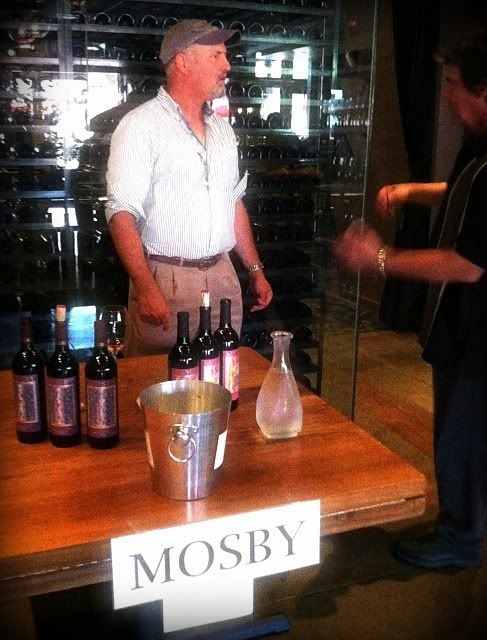
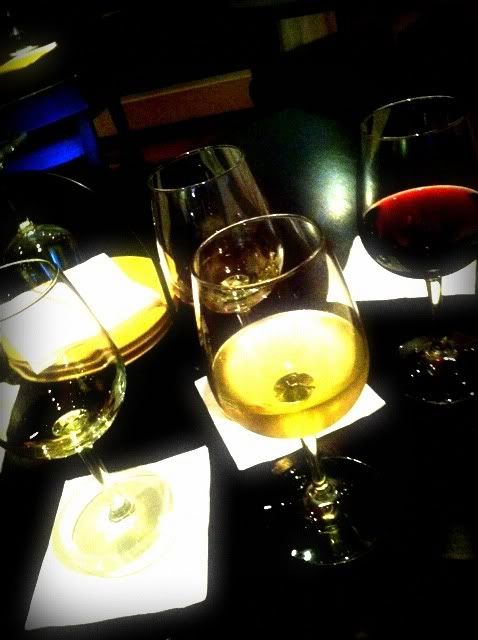

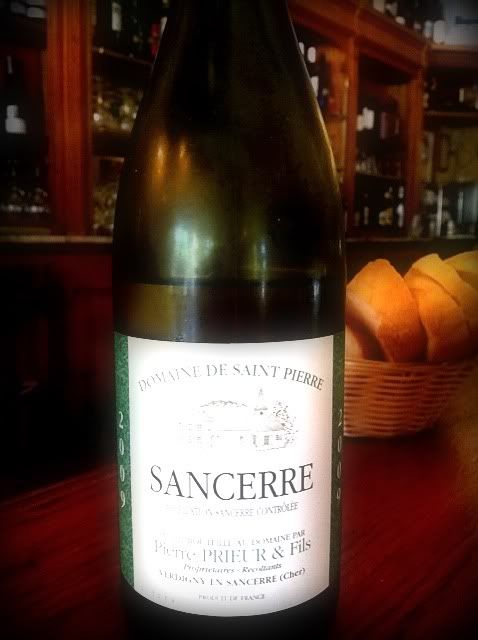
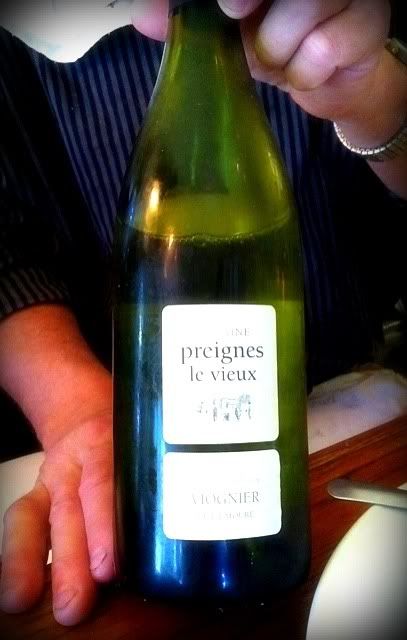 The Sancerre is a pretty golden-green hue in the glass. It's made from 100% Sauvignon Blanc and shows its Loire Valley terroir with a mineral-laden nose and an herbal component that's like a fistful of string beans. Big and full in the mouth, it's very dry with a nice acidity. Lemon rind and white grapefruit dominate the fruit profile, while wet rocks linger on the finish. It's a great match with the mussels and curry sauce.
The Sancerre is a pretty golden-green hue in the glass. It's made from 100% Sauvignon Blanc and shows its Loire Valley terroir with a mineral-laden nose and an herbal component that's like a fistful of string beans. Big and full in the mouth, it's very dry with a nice acidity. Lemon rind and white grapefruit dominate the fruit profile, while wet rocks linger on the finish. It's a great match with the mussels and curry sauce.